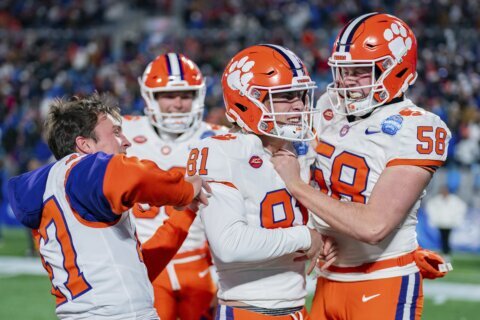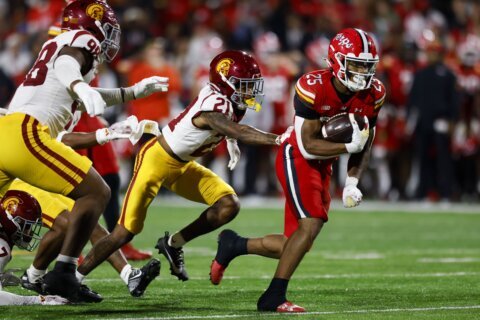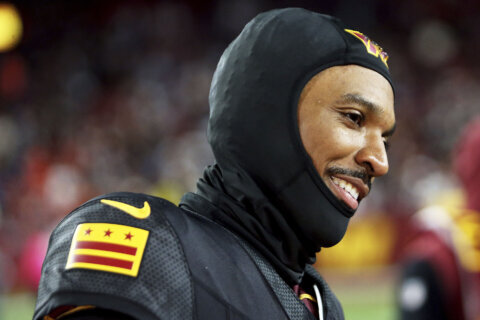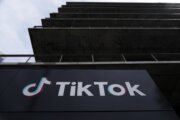WASHINGTON — There was much debate among Nationals fans about who should have started Game 1 of last season’s National League Division Series against the Giants — Stephen Strasburg or Jordan Zimmermann. After Strasburg was decent in a losing effort and Zimmermann was nearly unhittable, it became obvious that the most politic way to answer that same question for Opening Day 2015 was not to choose at all.
On Monday, the Nationals named new $210 million free agent acquisition Max Scherzer to throw the first pitch of the 2015 campaign when they host the New York Mets on April 6 in Washington. While being handed the ball first is certainly an honor, it’s more ceremonial than anything. Everyone in rotation (barring health setbacks) is set to make 32-33 starts. But the biggest benefit of setting the rotation this way may come for Strasburg.
Forget about even starting him second. Put him third, or even fourth, in the rotation. Not because he’s the third- or fourth-best pitcher in the rotation (he’s not), but to unburden him from the pressure of being the staff ace, and to help get him some more run support.
When he was selected with the top pick in the 2009 First-year Player Draft, Strasburg was ordained as a once-in-a-generation pitcher. His transcendent Washington debut — fanning 14 Pittsburgh Pirates over seven sparkling innings — only elevated expectations.
Now, everywhere he goes, that reputation follows him. In New York, matched up against Mets ace Matt Harvey, Strasburg was taunted with chants of “Har-vey’s bet-ter!” Three years later, questions about his 2012 shutdown — a decision entirely out of his own hands — still follow him.
Strasburg’s failure to live up to the impossible standards laid on him has led some to view him as a disappointment. But don’t let his lack of transcendence distract you from the fact that he has been very, very good.
In his three full seasons since returning from Tommy John surgery, Strasburg ranks in the top 10 among major league starters in strikeouts (630), WHIP (1.107), FIP (3.00) and strikeout-to-walk rate. He’s 13th in ERA over that span, better than Doug Fister (16th), Scherzer (18th) or Gio Gonzalez (20th).
Handed the ball on Opening Day each of the past three seasons, Strasburg has faced the additional pressure of carrying the load for a team with high expectations, often matching up with other teams’ aces, and often receiving sparing run support as a result.
In fact, Strasburg’s run support rank per year has dropped from 32nd (5.084) in the league in 2012 to 43rd (4.33) in 2013 and 46th (4.40) in 2014. Gonzalez won 20 games while receiving the third-highest run support in the league in 2012, then dropped off to 11 wins after ranking 22nd in 2013.
Scherzer, meanwhile, led all of MLB in run support in 2013 when he won 21 games. He ranked 13th last year in run support (18 wins), right ahead of Doug Fister (career-high 16 wins). Zimmermann ranked 35th in run support in both 2012 and 2014. When he won a career-high 19 games in 2013, his run support spiked to 19th.
While we shouldn’t judge pitchers by wins, we still often do. And while pitching lower in the rotation won’t necessarily have any direct impact on Strasburg’s relevant numbers, the lowered pressure and potential for greater run support can only help his win total, and his reputation in the minds of those who have already written him off for not living up to expectation.
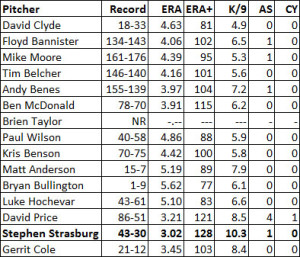 Speaking of which, since the Major League Baseball draft began in 1965, 16 pitchers have been taken number one overall (the last, Mark Appel in 2013, is still in the minors). The list to the right is far less illustrious than you probably realize.
Speaking of which, since the Major League Baseball draft began in 1965, 16 pitchers have been taken number one overall (the last, Mark Appel in 2013, is still in the minors). The list to the right is far less illustrious than you probably realize.
How does Strasburg look against those names? The only other true star is David Price, who is the only one of the lot to ever win a Cy Young. But Strasburg’s career ERA (and ERA+, for those making the AL/NL comparison), strikeout rate, strikeout-to-walk-rate, WHIP and FIP are all better than Price’s. In other words, he’s the best pitcher ever to be drafted number one overall.
Our ever-shortening collective attention span — and, by correlation, our waning patience for player development — often lead us to give up on a player well before we should. Strasburg won’t even be 26 until July 20. The immortal Sandy Koufax didn’t win his first Cy Young Award until his age-27 season, his ninth in the league.
Starting pitching aging curves suggest that across-the-board drop-off in velocity and strikeout rate doesn’t fully kick in until around age 29, giving Strasburg several more potential peak years to keep doing what he’s been doing. Now, perhaps, he’ll finally have the wins to show for it.

